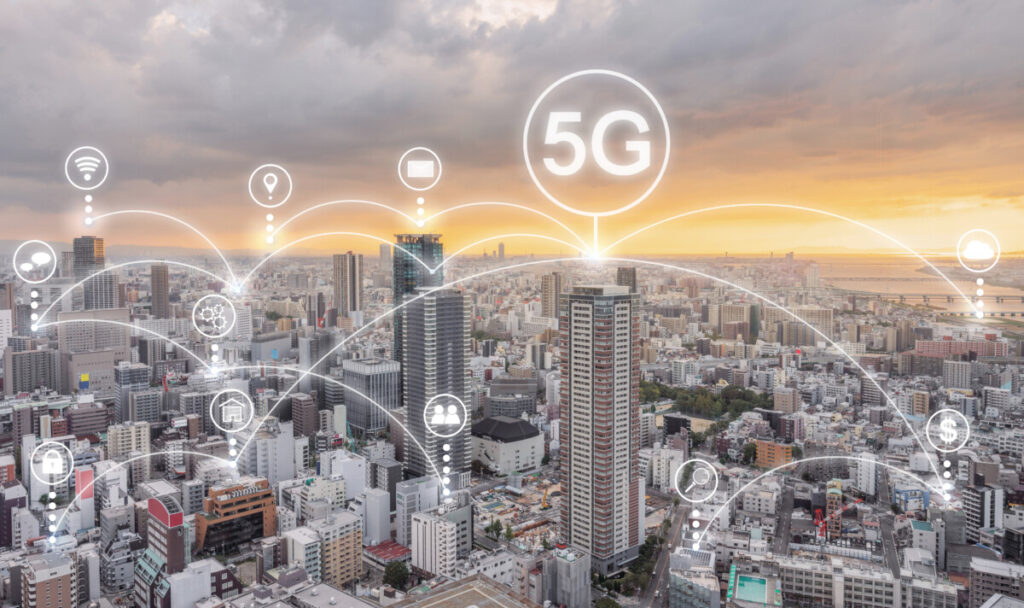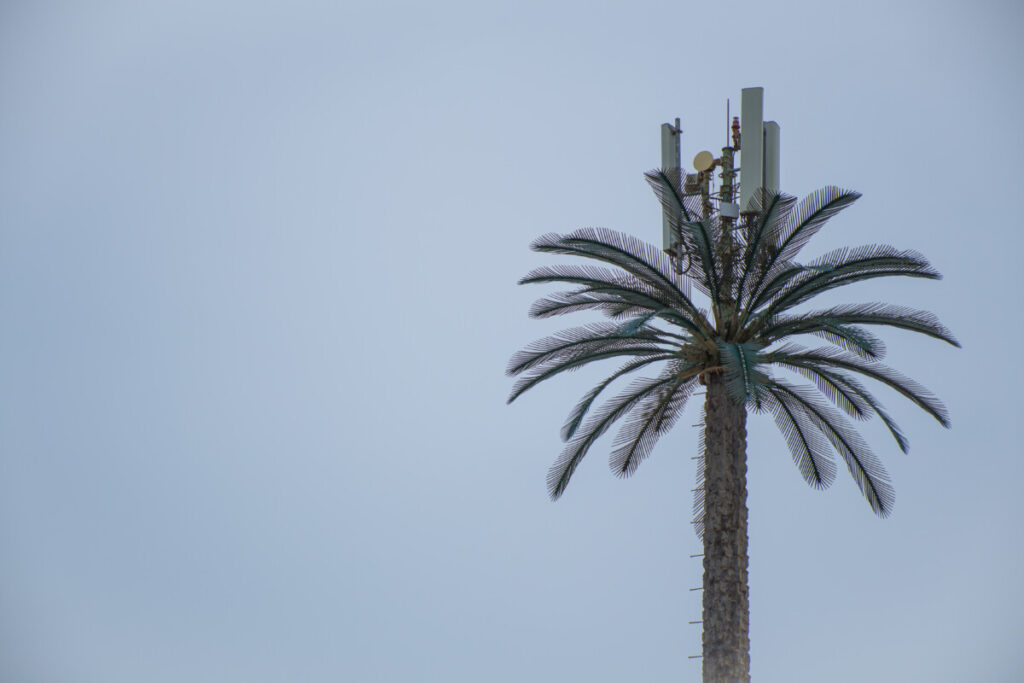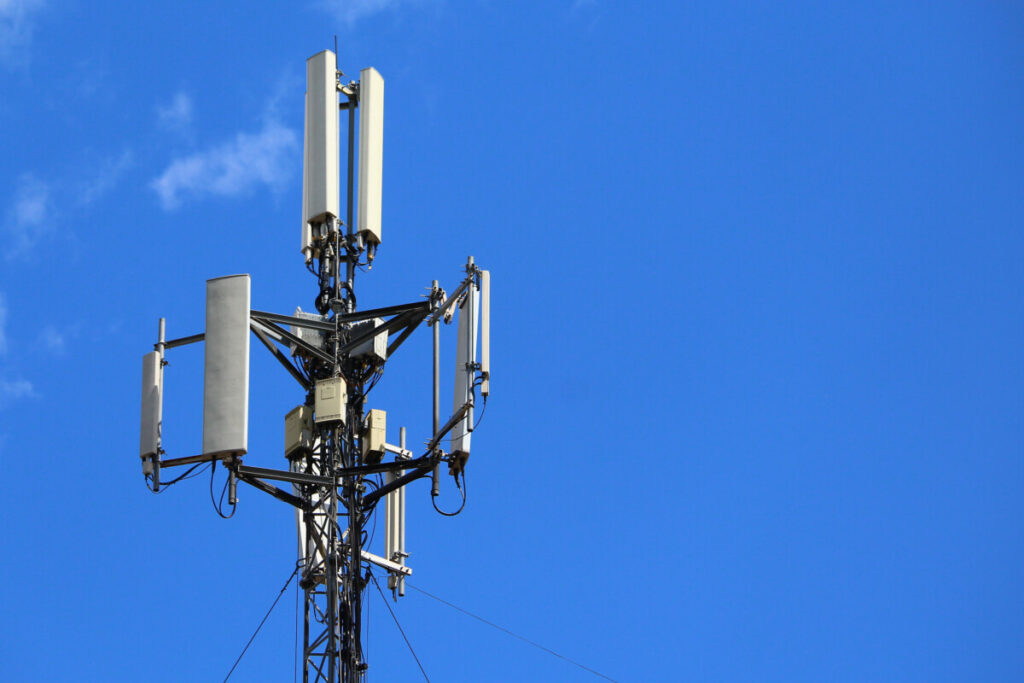
If you’re looking for the fastest, most consistent, low-latency signal for your smartphone, 5G might be the thing for you. It’s the latest generation of cellular signal, and one tower can serve more people at once than 4G ever could. But where can you access that speed?
To locate a 5G cell tower, use websites like Ookla 5G Map or apps on a smartphone, such as OpenSignal or Wardrive. Apps give more accurate results. Android phones will have a better time finding and using such apps than iPhones because they have more tools and apps available to them.
Let’s take a closer look at how to use these programs, how close a 5G tower needs to be for it to serve you data, and whether it’s dangerous to live near a 5G tower.
How to Find 5G Towers
Ookla 5G Map
One way to find 5G towers is to go to the Ookla 5G Map where you can see the distribution of towers across the whole world, and scroll in closer to see where the towers are near you.
This map shows that there are over 40 thousand towers in North America alone and over 47 thousand in Europe. Australia has nearly 4 thousand, and Asia has nearly 2 thousand. There are currently 100 in Africa and 86 in South America.
As you can see, you can use this tool to see the density of towers in your area. For example, there are 8 towers in Washington DC alone and lots of clusters surrounding that area. But Washington DC is 68 square miles, so can 8 towers be enough to cover it?
While Ookla can show the general distribution of 5G towers, it won’t show you the exact location. It’s good to use if you want to know how many towers are in or around your residence, but you might need something more precise to find the actual tower so that you can figure out its range.
This is a good tool to use if you want to make sure that there is a 5G signal available to you, as using more precise methods before knowing whether 5G is even an option could take a while if you don’t know where to start.
OpenSignal
This next option is an app called OpenSignal. This app works best on Android devices. You can still find it on iOS, but it’s a lot less accurate. Android devices will find towers with about 70% accuracy using this app, while iOS is about 20% accurate. With either device, though, it’s an easy app to use.
It can also run speed tests to tell you how fast your signal is. This can test download and upload speeds, video speeds, connectivity, and more.
Wardrive
The most accurate way to find a tower with your phone is by wardriving. It’s a tricky process, and you need a tower identifier and a signal strength reading. Android phones will be able to perform these functions easier than iPhones, which need an Intel chipset in order to work well in this way. They also have different methods of accessing these functions.
With those functions in hand, you drive around to map out the 5G towers in your area.
If you want to be 100% certain of a tower’s location, wardriving is the only real way to confirm it. Well, that and maybe actually seeing the tower yourself, though you might not be able to tell with just your eyes whether a thing you’re looking at is a 5G tower.
Using a combination of these methods will be the fastest way to find a 5G tower: get an idea from Ookla, use OpenSignal to hone in on it, and then wardrive it to pinpoint the location.

How Far Does the Signal Reach?
According to Verizon, the signal from the 5G Ultra Wideband can reach up to 1,500 feet. That’s less than three-tenths of a mile, which is why there are so many towers. 5G companies are currently pushing to add 5G nodes throughout cities everywhere in order to increase the reach of 5G connections.
Nodes are small cells of the 5G network that 5G companies are endeavoring to install in high population density areas across the world. They can put them on top of existing city structures, such as street lights, or create their own structures to disguise them and make them more visually appealing.
One such disguise includes cacti in Arizona and New Mexico. As a kid, did you ever see the cell towers that are disguised as coniferous trees? Fun to spot, though they sometimes stick out when they’re in cities instead of among real trees.
Without the disguises, 5G towers usually look like wide, white strips sticking vertically into the air.

Concerns with Cell Towers Near Houses
But is 5G safe to be around? Will having towers so close to where we live to affect our health? Will the radiation from them give us cancer?
While 5G signals do produce radiation, so do televisions, radios, and phones. All of these emit non-ionizing radiation, which is low-frequency radiation that hasn’t shown any negative health effects during the last decades that they’ve been around. In other words, this type of radiation has been around for years, so we don’t need to worry about it.
Millimeter waves, on the other hand, are new as of 5G. These waves are different from the normal cell signal waves because they have a higher frequency, and they can transfer more information across shorter distances than other waves can.
We don’t know a whole lot about them, as they were recently invented for 5G, but we do know this: they’re non-ionizing waves, just like the other cell signal waves.
We also know that they don’t go through skin, so they’re no more dangerous than sunlight. On top of that, if the millimeter waves won’t travel through the skin, they probably won’t travel through walls or roofs either, so the only way you’ll be exposed to any significant amount is if you make a ton of phone calls or spend a lot of time outside near a 5G tower.
So despite not knowing much about them, we know enough to be comfortable using them without any negative internal health effects.
